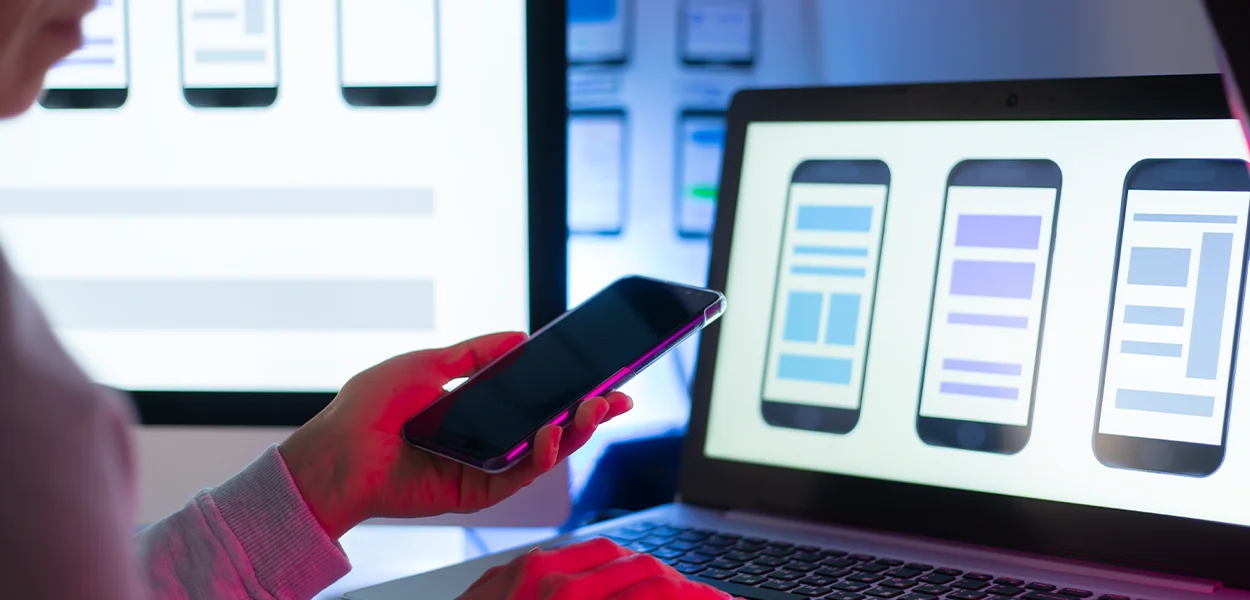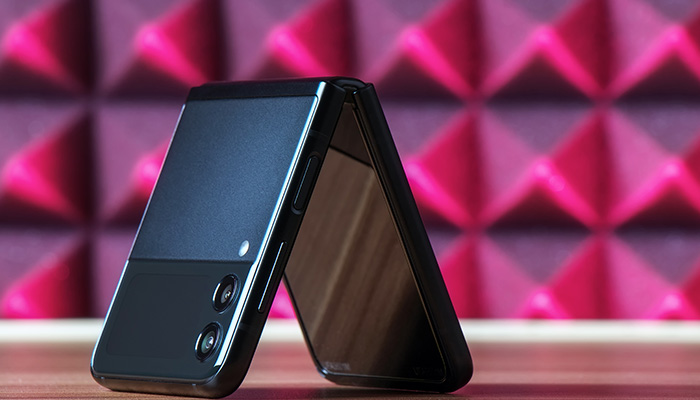Developing Apps for Foldable Devices
Developing Apps for Foldable Devices
Oct 20, 2023 14:20 PM
Developing Apps for Foldable Devices
Oct 20, 2023 14:20 PM

The year 2019 was a landmark one when the debate about folding smartphones reached its zenith level.
The rumors of Samsung getting ready to launch its unique foldable product had been circulated for some time. In 2019, however, when Google announced its collaboration with Samsung on this new technology, it became a reality, and a variety of manufacturers of devices soon began researching to get into the market.
The excitement of device manufacturers did not take long to reach the app development industry, and the app development industry began to do some homework of their own, preparing for the technical and design nitty-gritty that are required to offer a minimum learning curve and a seamless user experience for users in a completely new setting.
Before we move on to the sections, we will look at the details of app development for phones that fold and how you could make your mobile application for smartphones that fold. Let's look at the state it is in today.
The figures indicated above show that when smartphones that fold are introduced to marketplaces, they are not going to be a huge hit immediately. It will take time for them to make an impact on the smartphone market. However, as with every technological revolution, although the speed of change might appear slow initially; it'll be enormous in no time.
This will require both device makers and Android companies that develop apps to plan.
At first glance, it seems like it's all about having an adaptable UX for mobile applications. However, the impact is bigger.
Foldable phones provide more room for developers to design an immersive and rich experience for the various types of multi-windows.
Apps for foldable devices can make use of the bigger screen to show videos in a wider orientation or to incorporate additional features or controls in the application.
Apps for calendars will have the ability to open a full month instead of a week.
Banking apps will display multiple accounts in the multi-window app window instead of the initial one.
Business applications will allow you to plug into the functionality of the ability to read emails while browsing the document, etc.
Content creators will be able to switch between several applications.
Let's take a look at the various ways that foldable smartphones could impact the development of applications
The phones that fold will have different aspect ratios and orientations, but what remains the same are the quality requirements. Users will expect that you deliver the identical flawless and error-free quality and smooth app experience that they have come to expect.
With this in mind, the burden of delivering high-quality digital products will rise as you enter the application development phase for phones that fold.
With a plethora of phones that fold shortly to arrive on the smartphone market, app developers must work with many test cases, all at the expense of the issues associated with multi-window app configuration.
The result of creating applications that can fold up is a longer feedback-gathering process. Because you are taking an old-fashioned application into a new location, it will generate lots of feedback coming your way, especially in the transition phase.
This being said, it'd be important to create room to consider the modifications in the Agile scrum method.
Another major impact that the development of mobile apps is likely to face is due to the extended time for app development and the cost estimation.
Optimizing foldable apps to ensure that they are glitch-free across all modes will require lots of development, design, and testing, which results in cost increases.

Like any smartphone app creation process, let us break down the process of developing an app that can be used on different screens in three ways. The concept of foldable phones There are four primary aspects you'll need to take into account when you are designing your app for foldables.
Two States: There are two states on every smartphone that fold and unfold the screens, also known as the main display and display cover.
Unfolded state: This is when a phone transforms into a tablet and gives companies the space needed to provide a more enjoyable user experience. This extra space could be used to give more information and context, as well as add other actions or experiences for the applications.
In this state of foldable design, the phone appears like a normal smartphone that can be operated with just one hand.
One- or Two-Handed Design for Apps:
States alter the entire experience, including the aspect of the way that devices are held. Currently, users operate smartphones with one hand. However, when they are unfolded, users will need to use both hands. This will alter the design's dynamic in such a way that essential UI and UX elements will need to be contained in the thumb area and not pushed into other fingers' areas.
Multi Window
Because the screen space on smartphones that fold is significantly larger, multitasking must be taken into consideration. As designers, you need to be prepared for the moment when another app that has its own unique style and features will share the screen with your application and take a look at your multi-window process as well.
Screen Continuity
The user experience has to effortlessly transition from the folded state to the unfolded state and back into the unfolded state. There should be little or no change in your layout. This could make the flow of the app more confusing.
The technical preparations for foldable phones
Similar to developing, the work of developers will be separated into four different parts of app development to support folding phones. As of Android 11, Google will extend support for foldable phones. At present, we'll look at the entire process in depth.
Screen/App Continuity
As discussed in the previous section, screen continuity for apps is the term used to describe how an app is running on a smartphone that folds; it must change from one screen state effortlessly and smoothly. The app should always be able to resume at the same place and state.
Similar to developing, the development of apps will be separated into four different parts of app development to support foldable phones. With Android 11, Google will extend support for foldable devices, but for the moment, let's look at the entire process in depth.
Android 10 and up will allow a variety of aspect ratios. For foldables, the shape of the screen will vary from a huge, slim, and long screen to a 1:1 ratio. To ensure compatibility with devices, it is essential to try the apps on the widest range of screen sizes possible.
If you're unable to handle some of the ratios listed above, then you need to utilize those ratios. maxAspectRatio and minAspectRatio indicate the ratios of high and low that the app can manage.
Two apps running side-by-side is something that has been popularized by Google for some time. The benefit of the foldable technology is the ability for three or more applications to run simultaneously. Furthermore, the technology provides users with the ability to share information.
In the case of Android 9, what used to occur was that the focus of the application was in the resumed state as all other visible tasks were paused. For Android 10, it changed. The actions remained unresumed even when using multi-window mode. This is referred to as a multi-resumé.
The 10th OS version and up allow a multi-screen Android display. If an application is running on a device that has multiple screens, users can easily switch from one screen to the next. Multi-resume applies to multi-screen scenarios as well.
An application can determine which display should be running at the time it launches or when a new activity is added. This behavior is based on the launch mode for the activity that is defined in the manifest file and also in the intent flags, as well as in the settings made by people who initiate the activity.
An activity must check the present display in onCreate and onConfiguration Changed when handled. Android app developers need to change display layouts, resources, and other elements every time they see a change in the display.
Activity vs. app context
Display cutouts
A secondary screen is used to create a secondary screen.
When testing the app and QA, it is the Android QA team that has to ensure that the application responds to multi-window, multi-resume, and multi-window functionality and different screen sizes, as well as modifications to the configuration.
We are renowned within the industry for being the app development firm that provides innovative products and also for our involvement with technology that is yet to be mainstreamed in the mobile realm. It could be the incorporation of blockchain technology into applications or the introduction of a gesture-based mechanism for IoT. We are at the forefront of technological advancements.
Since the beginning of 2019, when discussions about folding phones began, our internal Android app developers have accumulated the details about Samsung's Emulator APK and AOSP Foldable Emulator Android Studio 3.5 to gather what we'd need to accomplish when foldable phones became mainstream. We are the leading mobile app development services and have served several requirements.
We have done several experiments to gain information about the way that apps appear when folded and unfolded. The lab has brought us to the forefront of developing apps for phones that fold. We are ready to transform your current application into a foldable app.
Strategy
Design
Blockchain Solution
Development
Launching
Testing
Maintenance
Contact US!

Plot 378-379, Udyog Vihar Phase 4 Rd, near nokia building, Electronic City, Phase IV, Sector 19, Gurugram, Haryana 122015
Copyright © 2025 PerfectionGeeks Technologies | All Rights Reserved | Policy
Strategy
Design
Blockchain Solution
Development
Contact US!

Plot 378-379, Udyog Vihar Phase 4 Rd, near nokia building, Electronic City, Phase IV, Sector 19, Gurugram, Haryana 122015

1968 S. Coast Hwy, Laguna Beach, CA 92651, United States
Copyright © 2025 PerfectionGeeks Technologies | All Rights Reserved | Policy